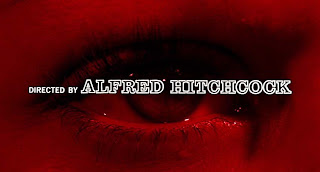Macro elements:
Characters- In our thriller film we plan to use our real names whilst footage is being recorded and by doing this it makes it more natural for us as actors. Our characters are student filmmakers, the boy (Fil) is filming, while the girl (Lydia) is the "presenter". Another character in our piece is a heavily cloaked individual, (Josh) who appears on camera only twice in the filmed footage, from two different angles, one from far away in an extreme long shot and the second a considerable amount closer in a mid shot. He seems to be the antagonistic character in the film, but in the later context of the thriller (which we won't be filmed for the opening sequence) he is actually a friend of the filmmakers, playing a prank and the real antagonistic character is to be revealed.
Narrative- The two main characters are student film makers, going to a desolate area to film a wildlife piece for their school project. They are filming themselves talking and bantering because the camera man wishes to make a "making of" piece, for extra credit. They then film the opening of piece needed for the project, during which the antagonist is slightly visible at different points, but only to the viewer. After this, the girl naturally tells the boy a creepy story to do with the area, the cameraman (boy) then notices the antagonist whilst filming and is in disbelief when he seems to disappear, but then the antagonistic character (Josh) quickly reappears right behind the girl, the sequence abruptly cuts at this point. The rest of our opening sequence will consist of credits which will include music and various camera shot types to continue and advance on the mysterious and suspenseful atmosphere created.
Atmosphere- We would build a very realistic atmosphere (mostly helped by the Shaky camera style of filming) which will create a suspenseful ambiance for the audience as they will feel more involved, and it also makes the whole piece really seem like "Found footage" and this heightens the tension felt, as the events occurring feel very real to the audience. Suspense would largely be built by dialogue between the girl and boy, when the girl tells the boy a frightening story and since they have very worried voices when the boy spots the antagonist, . Music would only be included in the title sequence, in which it would be very minimalistic yet unnerving.
Micro elements Sound- For the handy cam style part of our piece, filmed at the very beginning of our opening sequence, only diegetic sound will be heard as we need to keep to the theme of found footage for this part and adding music through editing would be inappropriate. However at the very end of this filming, as the scene abruptly cuts, a sound effect such as a loud boom will be heard in order to make the audience jump and feel on edge.
For the opening credits, after the filmed footage, music will be used which will follow the sound effect. To begin this, we thought of using a single monotonic note, which again, we hope will make the audience feel slightly disturbed and unnerved. We have found a fitting instrument from the software, Garage Band for this sound which is a shimmering flute. Depending on the time limit and how we split our time up for the filmed footage and credits, will determine whether or not we decide to include a melody for the credits as well.
Editing- We have decided to use continuity editing for this piece and we will also edit our footage that we film a lot to create the suspensful effect we are looking for and to also add credits, fades, dissolves, music etc.
Camerawork- As previously touched on, we will be using a handy cam style for the filming of the first part of our opening sequence. This will be created simply by Lydia and Fil acting as student filmmakers with Fil holding the camera to shoot the documentary. This will be a very natural process for both Lydia and Fil as they will not have to act as anyone but themselves, with a lose structure to the dialogue and narrative which will be followed.
In contrast, we will be using various camera shot types during the opening credits of our piece which will have clean cut editing. These will include: Panning, close ups, extreme close ups, long shots, extreme long shots, head shots etc.
Mise-en-scene- Location We have chosen our location carefully to find an open area that would be appropriate and suited to the type of opening we will be filming. The area is a patrially wooded, partially fielded area in the small village of Little Downham. The location we have picked is also easily accesible so there will not be the problem of getting there to film.
CostumeLydia: In the sequence Lydia will be playing the part of the student filmmaker presenting the wildlife project video, so will be wearing either jeans or combat style trousers with a sweatshirt and a body warmer.
Fil: In the sequence Fil is playing the camerman as well as being the actual camerman. So he will be dressed in casual clothes maybe in dark colours such as black and white and a woolly hat. (Cameramen stereotypically wear warm hats as they need to keep warm when shooting)
Josh: In the sequence Josh is playing the mysterious figure seen by the viewer and creates an uncertainty about the whereabouts and welfare of the student filmmakers. As it needs to be kept a mystery on what the figure is, Josh will be heavily cloaked and all in black.
Props As 'Filmed Footage' is the basis for our thriller opening sequence added props will not be need. If the want for props arrises we will use ones found within the location to make the film as natural as possible.












